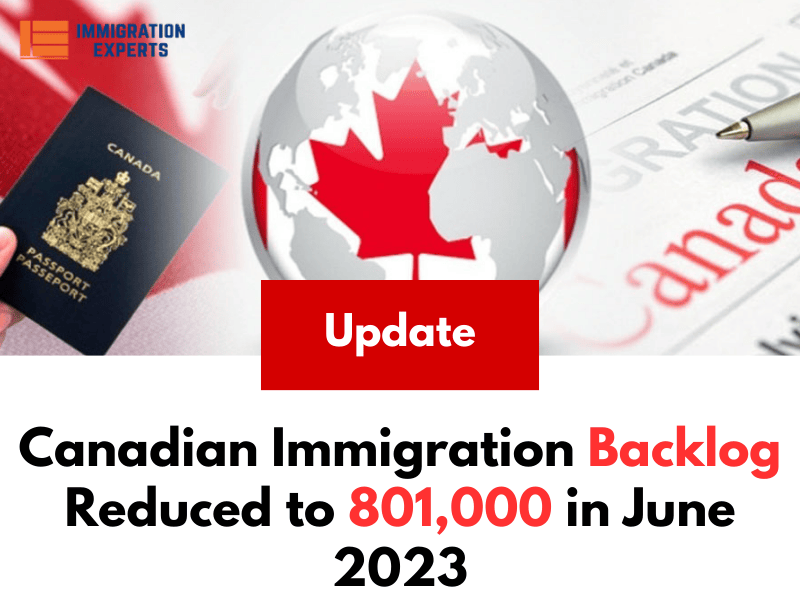051 8439995, 042 35911332

According to the latest information from IRCC, as of July 25, 2023, approximately 2.3 million applications for Canadian immigration, citizenship, and visas are currently being processed.
Out of these 2,264,000 applications in progress, 801,000 are part of the backlog, which means they are taking longer to process than the standard service time set by IRCC.
The IRCC has successfully processed 1,462,700 applications within their normal service standards. This represents a notable increase of 34,700 applications compared to the previous backlog update.
As for the backlog, it has been reduced by 19,000 applications compared to the data from the previous month. This indicates progress in clearing the pending applications and reducing the overall processing time.
The data provided in this report is the latest update from the immigration department, reflecting the processing inventory status as of July 25, 2023, with the information being up-to-date until June 30, 2023.

Regarding the backlog of applications, there have been varying levels of reduction for different types of applications. The backlog for citizenship applications saw the most significant decrease, with a reduction of 13.25%. However, the backlog for permanent residency applications was only reduced by 1.62%, and for temporary residency applications, the reduction was even smaller, at just 0.70%.

Things You Will Find In This Page
Changes in Backlog Month-on-Month in 2023
January 31, 2023
- Backlog: 974,600
- Total Applications Under Processing: 1,944,500
February 28, 2023
- Backlog: 910,400
- Total Applications Under Processing: 1,962,600
March 31, 2023
- Backlog: 896,300
- Total Applications Under Processing: 2,017,700
April 30, 2023
- Backlog: 809,000
- Total Applications Under Processing: 2,006,000
May 31, 2023
- Backlog: 820,000
- Total Applications Under Processing: 2,248,000
June 30, 2023
- Backlog: 801,000
- Total Applications Under Processing: 1,462,700
Understanding Backlog Data and IRCC Service Standards
Understanding the difference between data on backlog and data on service standards is critical because it provides insight into the immigration application processing system’s efficiency and efficacy.
For instance, let’s take the example of spousal sponsorship applications, where the typical processing time is one year. If an application is within this time frame and is actively being processed, it is “NOT” considered a backlog. In this case, the application is still within the expected service standard, and there is no delay or backlog for that particular application.
On the other hand, if an application for spousal sponsorship has exceeded the 12-month time limit and is still pending without a decision, then it is considered part of the backlog. Backlog refers to applications that have not been processed within the expected service standards and are awaiting assessment beyond the specified processing time.
The immigration department aims to process 80% of the submitted applications according to their service standards.
